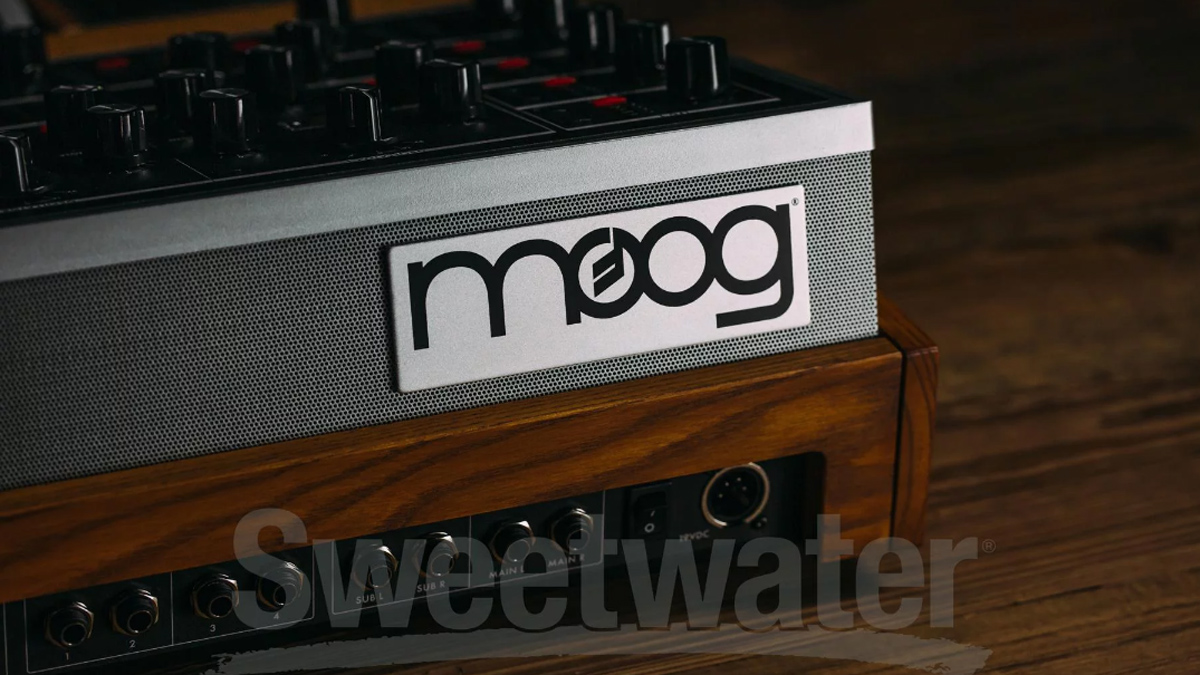The Moog One could be the Moog polysynth that you’ve always wanted
You’ll need deep pockets if you want to buy one, though...

Any Moog synth launch is greeted with excitement, but when it’s the company’s first polysynth in more than three decades, it’s a particular big deal. The Moog One - which hasn’t actually been announced yet but has broken cover via US retailer Sweetwater - is described as an “analogue dream synth”, and boasts what Moog is said to be calling the most advanced architecture ever for one of its instruments.
Available in eight- and 16-voice versions, the Moog One comes with three VCOs and two independent analogue filters (a variable state filter and a Moog ladder filter) that can be run in series or parallel. On top of that there’s a dual-source variable analogue noise generator, an analogue mixer with external audio input, four LFOs and three envelope generators.
What’s more, the Moog One is tri-timbral, so you can effectively play three synths simultaneously. These can be split, layered or zoned across the keyboard, all within a single preset. Each of these synths can have its own parameter settings, note range, arpeggiator, sequencer and effects, so the sound design potential is massive.
On the subject of effects, you get plenty, which can be applied on the aforementioned per-synth basis or to the master bus. The likes of chorus, delay, phase, bit reduction and vocoding are supplemented by a range of Eventide reverbs. The effects are digital, but you can ensure an all-analogue signal path if you ‘true bypass’ them.
The Moog One is capable of storing tens of thousands of presets, all of which can be browsed from the central LCD panel. You can also assign presets to the front-panel Performance Sets for quick access, while a Snapshot button enables you to capture all current settings immediately. Presets can be shared via USB drive, too, so it’s easy to take the sounds of one Moog One to another.
In terms of control, you get 73 knobs and 144 buttons, while additional parameters can be accessed from the LCD centre panel. The synth has a handcrafted ash cabinet and an aluminium front panel, while the 61-note keybed comes from Fatar. An assignable pressure-sensitive X/Y pad provides further expressivity options.
There’s currently no sign of the Moog One on the Moog website, but both versions are being listed by Sweetwater. The eight-voice model costs $5,999 and the 16-voice synth is $7,999, so we’re definitely talking top-end prices here.
Get the MusicRadar Newsletter
Want all the hottest music and gear news, reviews, deals, features and more, direct to your inbox? Sign up here.
However, this is Moog we’re talking about, and we’d still expect this synth to be in high demand. Consider us in the queue.
Moog One features
- 8- or 16-voice polyphony
- 3 VCOs per voice with waveshape mixing and OLED displays
- Unison mode (up to 48 oscillators on the 16-voice instrument)
- 2 filters per voice with filter mixing (2 multimode State Variable filters that function as a single filter, and a classic lowpass/highpass Moog Ladder filter)
- 3 DAHDSR envelopes per voice with user-definable curves
- 3-part multitimbrality
- Separate sequencer and arpeggiator per timbre
- Chord memory
- Dual-source noise generator with dedicated envelope
- Mixer with external audio input
- Ring modulation with selectable routing
- Oscillator FM and hard sync with selectable routing
- 4 assignable LFOs
- Premium 61-note Fatar TP-8S keybed with velocity and aftertouch
- Assignable pressure-sensitive X/Y pad
- Digital Effects (Synth and Master Bus)
- Eventide reverbs
- Selectable glide types
- USB and DIN MIDI
- Save, categorize, and recall tens of thousands of presets
- Create Performance Sets that make up to 64 presets accessible at the push of a button
- 2 x ¼" stereo headphone outputs
- 2 pairs of assignable ¼" outputs (supports TRS and TS)
- 4 x ¼" hardware inserts (TRS)
- 1 x ¼" external audio input (line-level)
- 1 XLR + ¼" TRS combo external audio input with trim knob
- 9 assignable CV/GATE I/O (5-in/4-out)
- USB drive support for system and preset backup
- LAN port for future expansion

I’m the Deputy Editor of MusicRadar, having worked on the site since its launch in 2007. I previously spent eight years working on our sister magazine, Computer Music. I’ve been playing the piano, gigging in bands and failing to finish tracks at home for more than 30 years, 24 of which I’ve also spent writing about music and the ever-changing technology used to make it.
“Excels at unique modulated timbres, atonal drones and microtonal sequences that reinvent themselves each time you dare to touch the synth”: Soma Laboratories Lyra-4 review
e-instruments’ Slower is the laidback software instrument that could put your music on the fast track to success









